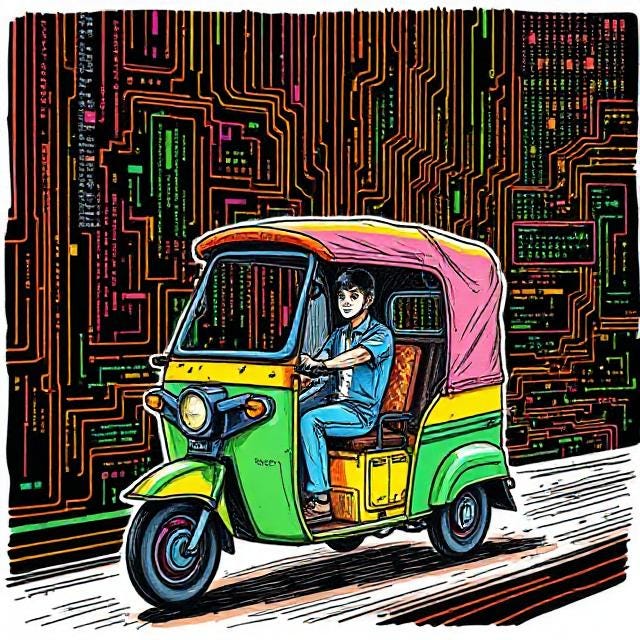The Silicon Valley of India
Can Rachel Reeves learn from Bangalore?
In 1767, as the British East India Company was transforming itself from a trading company to a military power in India, the British and their allies prepared to mount an invasion into the rapidly expanding Kingdom of Mysore.
The Kingdom of Mysore was the largest realm in Southern India, covering all of modern day Karnataka, and much of its surrounding states. It was growing - alarming the British forces that sought control and influence over India. The Kingdom was also blocking important trade routes for the British, and negotiations for access had collapsed.
But the British invasion was, at least initially, a failure. The armies of Mysore fought off the military might of the British East India Company for more than 30 years.
They were helped, in a large part, by a new military innovation: the Mysorean rocket. These rockets used iron-casing to pack in more explosives: leading to greater range and greater power. They barraged the British with these Mysorean rockets, keeping them at bay until 1799. The Mysorean rockets were such a powerful weapon that the British shipped the rocket casing back to London for analysis. The rocket technology was eventually used against Napoleon, and against Americans fighting for independence (it is Mysorean rockets that generate the ‘rockets’ red glare’ mentioned in the US national anthem).
These rockets started life in a research institute in Bangalore.
Silicon Valley
Today, 200+ years on, Bangalore is still home to research and development. But engineers are more likely to be working on AI and robotics than rockets, though they are far greater in number. 4 million + techies working for the likes of Amazon, Microsoft, Facebook, and Google are based in Bangalore.
The city has earned a reputation as the Silicon Valley of India - named after the famous Californian region that’s home to billions of dollars worth of tech companies.
Bangalore’s shift to become a tech capital didn’t happen by accident: it took government intervention. First, in the development of great education at every stage: Bangalore’s literacy rate has always been above the average in India.
Following Indian independence in the 40s, the government launched a number of publicly-owned companies to create jobs and boost economic growth. Many were in IT and IT-adjacent areas, and many of those were headquartered in Bangalore. This brought talent to the city from across India, and across Asia.
It isn’t enough to start your own companies though, and the government also jointly invested with the private sector in the infrastructure for other companies to operate in Bangalore. In the 90s, the International Tech Park was built to attract multinational tech giants like AT&T, Oracle and Dell.
Turning a city into a tech superpower brings challenges, though, and Bangalore faces a big one: traffic. The surge in population has brought the city to almost a halt, and it now takes nearly half an hour to travel 10km through the city by car. That means you’d be better off travelling around Bangalore on Mo Farah’s shoulders than you would in a car.
The combination of its weather and soaring population also mean essentials like water become scarce - creating dangerous living conditions for its poorer residents in particular.
Back to the UK
Rachel Reeves might want to keep these dangers in mind as works to build Europe’s Silicon Valley in the UK. Her plans for a super-city will see an Oxford-Cambridge transport corridor developed between the two university cities, designed to encourage investment in the area: and tech companies to base themselves from the region.
The investment in transport is good news and a sign that she’s learning from places like Bangalore: you can bring the companies, but if you want to keep the people the place has to be livable and be prepared for the hike in population.
Reeves has also overruled objections to 4,500 homes in the area. More home-building is a great thing, and it’s about time the government stepped in to make it happen. For too long, our archaic planning system has prioritised newts and frogs over giving people a place to live; and whiny NIMBYs over aspirational home-buyers.
For maximum impact, the government can follow in the lessons from Bangalore and launch their own technology initiatives that are based in the region. Tech for military application, the NHS AI lab, the Department for Science, Innovation and Technology - government can illuminate the path for the public sector by launching their own tech initiatives in this new Silicon Valley.
Reeves’ big economic intervention has been the best thing she’s done to date. It might not grab all the headlines, but more of this will lead to economic growth - and another five years in power. It won’t please all the people all the time, but it’ll achieve the big goals: and that’s what this government must be laser focused on.



